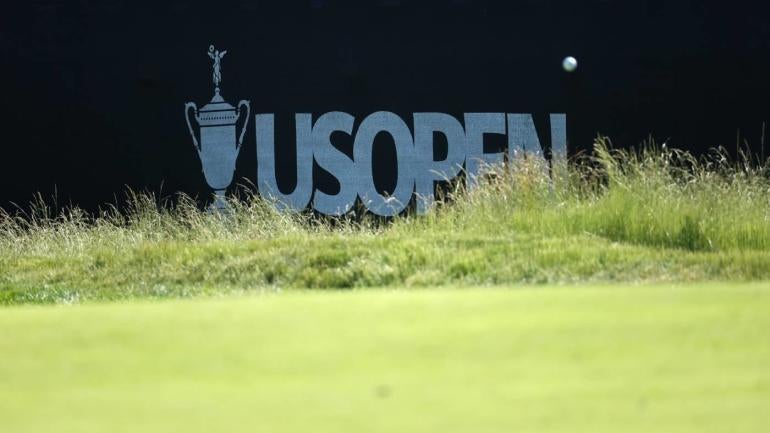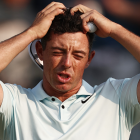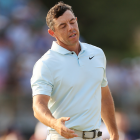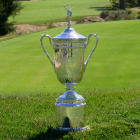
When you're the first, you don't need additional distinction as the U.S. Open returns to The Country Club this week in Brookline, Massachusetts. Founded in 1882, The Country Club's original purpose wasn't centered around golf, as it hosted numerous social activities with a focus on horse racing. With the club's attention on the racetrack, the discussion to move toward more a golf-centric membership was not without disagreement, causing the first rendition of the golf course to share land with the race track.
Later becoming a founding member of the United States Golf Association, The Country Club hosted numerous amateur championships in the early 1900s. However, their first claim to fame came in 1913 when local amateur Francis Ouimet captured the U.S. Open at only 20 years of age in a playoff over Ted Ray and Harry Vardon.
With U.S. Women's Amateurs and U.S. Amateurs sprinkled in, the U.S. Open would not return to The Country Club until 1963, a tournament which featured another playoff. A double bogey on the famous par-4 17th dropped Jacky Cupit out of the solo lead late in the final round, and the next day he and Arnold Palmer would fall to Julius Boros in an 18-hole playoff.
Twenty-five years later, yet another playoff unfolded as Curtis Strange defeated Nick Faldo in the third U.S. Open held at The Country Club.
The 122nd U.S. Open will look different than those previously hosted by The Country Club, as acclaimed golf architect Gil Hanse led the restoration process beginning in 2009, just as he did at Southern Hills. Hundreds of trees were removed, greens were expanded and the short, diabolical par-3 12th has been included into the Championship Course.
History still runs deep at The Country Club despite the modifications, and even more will be made this week at the U.S. Open.
Previous U.S. Opens held at The Country Club
| Year | Winner | Winning Score | Runner-up | Playoff (Y/N) |
|---|---|---|---|---|
1988 | Curtis Strange | 278 (-6) | Nick Faldo | Yes |
1963 | Julius Boros | 293 (+9) | Jacky Cupit, Arnold Palmer | Yes |
1913 | Francis Ouimet | 304 (+12) | Ted Ray, Harry Vardon | Yes |
What Gil Hanse has said
The hottest name in golf architecture had his hands all over the major championships this year, yet Southern Hills and The Country Club could not be further apart. With the former boasting wide fairways and tight run-offs, the latter will feature tight landing areas and thick, luscious rough around the greens. However, it is another area of the golf course where players will be tested the most.
"It's the small, tilty greens. I mean, they are tiny," Hanse told The Fried Egg podcast when asked what makes The Country Club so difficult. "I know they're bigger than Pebble Beach, but they are probably the second-smallest set of greens for major championships aside from Pebble. I think, you've got to play good golf shots in there, I think U.S. Open rough will be a big factor in that. The other thing -- we saw it at Winged Foot, Bryson [DeChambeau] had a plan to go in and he executed it and it worked -- I am not sure something like that works at The Country Club."
In addition to the small putting surfaces, a common term uttered by Hanse in regards to his work has been "unpredictability." He wants to force these players into uncomfortable spots, and while that was mainly the run-offs at Southern Hills, it is the blind tee shots, uphill approaches and uneven lies that will be the cause at The Country Club.
"It's not linksy by definition, but it has some of those characteristics where your ball is going to get some weird bounces, it's going to get some of those kicks and you can't see it land," Hanse told the No Laying Up podcast. "And if in your mind you're thinking, 'OK, I hit that right down the middle, I am going to walk over the crest of this rock outcropping and the ball is going to be sitting in the middle and you [wonder] where is it' and it's now in the right rough because it just got a bad bounce, how do you react to that?"
What are the pros saying
Players are still going through their preparations, but there may be no better competitor to ask about The Country Club than Matthew Fitzpatrick. A winner here in 2013 at the U.S. Amateur, the Englishman will now attempt to become the 13th man to capture the American-double with a victory at the U.S. Open.
"Back in 2013, you had to hit fairways and greens. The fairways were really, really tight and the rough was thick, and that's why we really did well that week, as well as scrambled really well," said Fitzpatrick. "I think by the looks of it, from what I can see, it's the same again, which is nice, and yeah, I'm just really looking forward to going out there tomorrow and playing."
Needing to hit fairways hasn't been a prerequisite for success in recent U.S. Open events, as the bomb-and-gouge methodology has been successfully employed by Jon Rahm, Bryson DeChambeau, Brooks Koepka and Dustin Johnson. While a nice blend of distance and accuracy may be needed off the tee, the defending champion's eyes are drawn to the greens.
"I knew it coming in, but it's not the biggest greens out there, right? And the ones that have a healthy size don't play like it, like the par-3 6th. It's a bigger green, but quite a bit of slopes. You can easily end up off of it, even though, on paper, it is big," said Rahm. "I think that's the biggest challenge. I wouldn't say they're the narrowest fairways we've played on a U.S. Open, but second shots into the green are going to be important. The rough around the greens is about as healthy as I've seen in a while, so certainly it's going to be obviously key in a U.S. Open, but especially with smaller greens you're going to need to use it quite a bit."
Rick Gehman is joined by Sia Nejad and Jonathan Coachman to preview the 2022 U.S. Open. Follow & listen to The First Cut on Apple Podcasts and Spotify.
What to expect from The Country Club
2011 U.S. Open champion Rory McIlroy likened The Country Club to Winged Foot with the need to strategize more. A par 70 and measuring just over 7,200 yards, The Country Club marks the return to a typical U.S. Open venue but will feature Open Championship-type qualities.
Fairways will be fast, greens will be firm and rough and fescue will force players to make difficult decisions in terms of how they may want to attack a given hole. Birdies will be rare, pars a fantastic score and bogeys will be more than acceptable for the best players in the world. Factor in winds expected to switch directions midway through the week, and competitors will not only have to handle the golf course but also the elements.
"You know it's going to be tough," said two-time U.S. Open champion Brooks Koepka. "I like that. I like scores that are somewhat around even par. It's going to be difficult. You have to drive the ball well. Rough is pretty tough, and it's only going to get tougher because I'm sure they won't cut it. Golf course is good. It's kind of weird; got a couple of blind shots, but other than that, it's a great golf course, fun golf course to play."





















